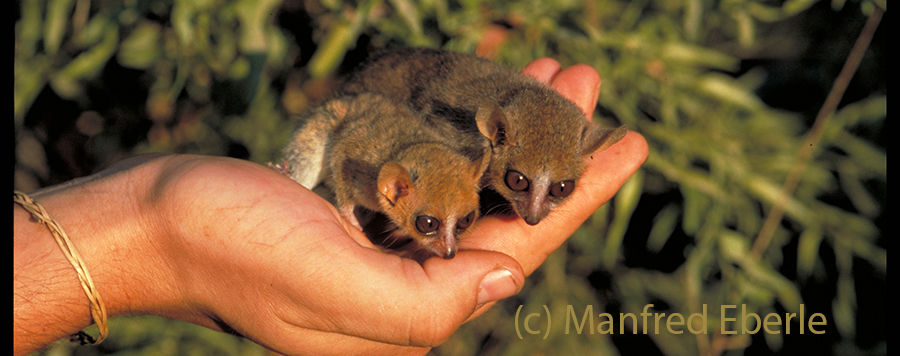
Ecological structure in a cheirogaleid species assemblage in Western Madagascar
Background
Spatio-temporal distribution patterns of species in response to natural and anthropogenic drivers provide insight into the ecological processes that determine community composition. We investigated determinants of ecological structure in a species assemblage of 4 closely related primate species of the family Cheirogaleidae (Microcebus berthae, Microcebus murinus, Cheirogaleus medius, Mirza coquereli) in western Madagascar by extensive line transect surveys across spatial and temporal heterogeneities with the specific goal of elucidating the mechanisms stabilizing competitive coexistence of the two mouse lemur species (Microcebus spp.).
Results
Interspecific competition between the mouse lemurs was indicated by negative spatial associations in degraded habitat and by habitat partitioning along anthropogenic disturbance gradients during dry seasons with resource scarcity. In non-degraded habitat, intraguild predator M. coquereli, but not C. medius, was negatively associated with M. murinus on the population level, whereas its regional distribution overlapped spatially with that of M. berthae. The species’ interspecific distribution pattern across spatial and temporal heterogeneities corresponded to predictions for agent-mediated coexistence and thus confirmed M. coquereli’s stabilizing impact on the coexistence of mouse lemurs.
Conclusions
Interspecific interactions contribute to ecological structure in this cheirogaleid assemblage and determinants vary across spatio-temporal heterogeneities. Coexistence of Microcebus spp. is stabilized by an agent-mediated spatial storage effect: M. coquereli creates refuges from competition for M. berthae in intact habitat, whereas anthropogenic environments provide M. murinus with an escape from resource competition and intraguild predation. Species persistence in the assemblage therefore depends on the conservation of habitat content and context that stabilizing mechanisms rely on.






